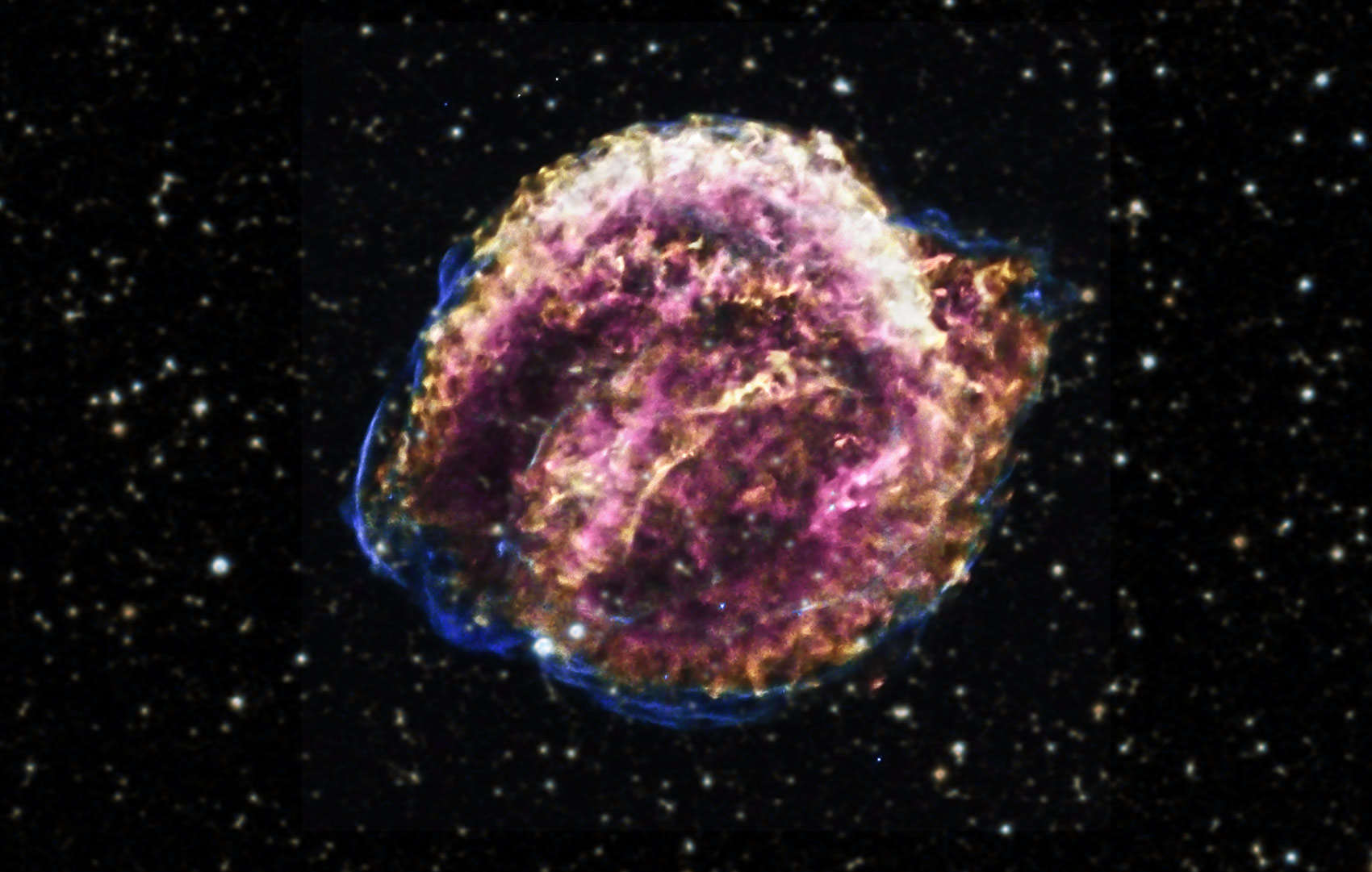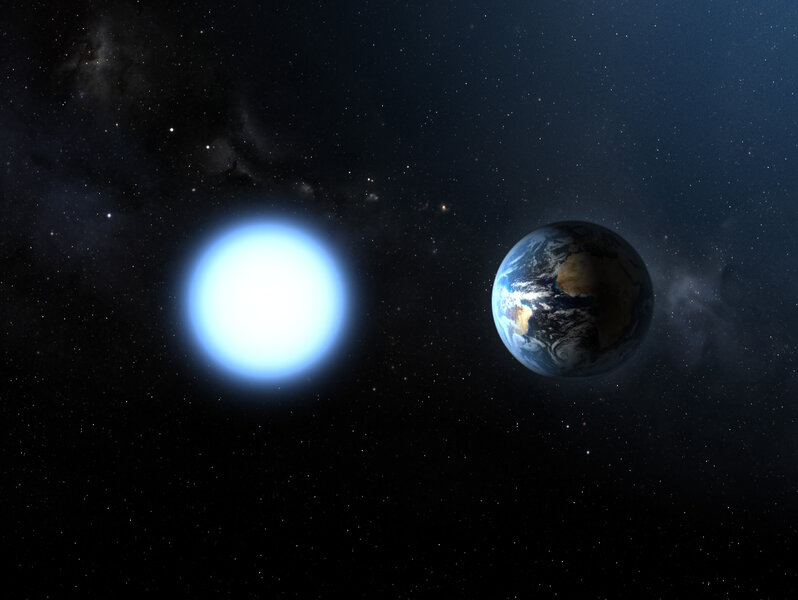Create a free profile to get unlimited access to exclusive videos, sweepstakes, and more!
How far away are supernovae? Astronomers find a way to tighten measurements

A team of astronomers studying distant exploding stars has found a way to tighten up the way the distance to them is measured — and in doing so, tighten up measurements of how the Universe is expanding.
This kind of supernova is called a Type Ia. These occur when a small, dense white dwarf accumulates matter on its surface, eventually gathering so much matter the entire star undergoes nuclear fusion. The release of energy is absolutely colossal, equivalent to billions of times the Sun's output.
This is important for two reasons. Well, lots of reasons, but two we're concerned with here. One is that quantum mechanics makes the rules here, and all these stars explode when they reach a certain mass (about 1.4 times the Sun's mass), and that means they explode with about the same energy. That in turn means that if we see one close by or far away, we can measure its distance simply by determining how bright it got.
The other is that they are so bright they can be seen at vast distances, billions of light years away. The Universe is expanding, and more distant objects are moving away more rapidly. If we can measure these Type Ia supernovae with great accuracy we can determine how the Universe is expanding.
And, in fact, this has been done. In 1998 two different teams published results showing that the Universe is not just expanding but accelerating, expanding faster every day. It's not clear what is causing this, but we call it dark energy, and figuring out what this stuff really is made of is a major goal in astrophysics — after all, we're talking the fate of the Universe here.
The problem is that not all Type Ias explode in exactly the same way. But this can be compensated for. As an example, some give off more energy than others, and in general those take longer to reach their peak brightness and fade. So, if you measure how long it takes to brighten and fade, you can determine its peak brightness, and then use that to get the distance.
This was what led to the breakthrough in 1998. But even so, there is still some wiggle room in the way they explode, some uncertainty in their brightness that means we still have some uncertainty in our measurements of how rapidly the Universe is expanding.
That's what the new work looks at. They found a new method to determine the distance to these exploding stars, and published two papers about it; the first deals with developing the method, and the second implementing it.
What they did is complex and clever. They looked at over 170 supernovae, taking spectra of them around the time of maximum brightness (in general they take a couple of weeks to get to their brightest, and then fade over many months). A spectrum shows how bright an object is in different wavelengths, which you can think of as colors; in this case many hundreds of colors. Different elements absorb and emit light at different wavelengths, which in turn can be used as diagnostics for the supernova about its temperature, speed, density, and so forth.
Instead of just looking at one characteristic, like how long it takes to brighten and fade, they could look at many, and found that overall the 173 supernovae they observed look remarkably similar near maximum brightness. They did find that some individual lines (astronomy speak for wavelengths where elements absorb or emit light) change from supernova to supernova, but if they looked at the light coming from between major lines (they literally called this the Reading Between The Lines method) all the supernovae looked incredibly similar.
This allowed them to create a computer model that compensated for differences between the individual supernovae due to external variations (like if one happened to be embedded in a dust cloud) which meant that any differences from one supernova to another must be due to something intrinsic, like its chemical composition or other physical factors.
They employed machine learning to find "supernova twins," where two different supernovae spectra had very similar spectra. Using those as a baseline they could then explore how the spectra differed and discover that in the end, only three factors affected how the brightness changes from supernova to supernova — the light from calcium and silicon, and how rapidly the supernova debris expands.
By modeling these three factors they could then compensate for them, allowing them to more accurately predict just how bright a supernova gets. What they found is that their method is a significant improvement over the older one (using how long it takes the supernova to brighten and fade), and they are able to drop the distance uncertainty to only about 3%.
This is important! The better our distance measurement gets, the better we can measure the effects of dark energy on the cosmic expansion. As bigger telescopes come online in the next few years, more supernovae will be observed farther away. By applying this method, hopefully, those far distant explosions can be used even more accurately than before to understand what the Universe is doing.
It's an amazing thing that astronomers are trying to figure out how the Universe itself behaves, and even to understand its fate. But we are and we're getting better at it all the time.




























